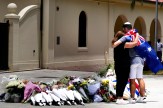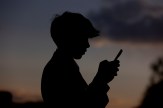Hunger reimagined: The story of food insecurity as told through sculpture
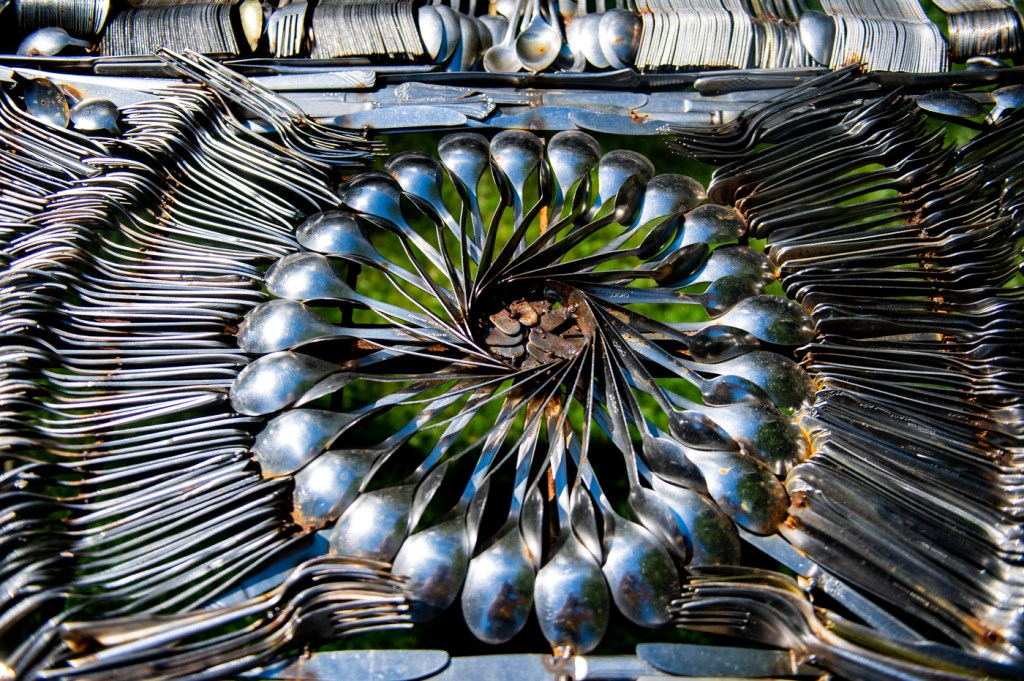
Walking along the narrow path by the koi pond on the east side of the Curry Student Center this week, you might stop and wonder: What in the world is that metallic table that looks like it’s been plopped beside water?
Composed entirely of cutlery, the table is a data sculpture designed to bring attention to the issue of food insecurity in Massachusetts—a problem, like many others, that’s been exacerbated by the COVID-19 pandemic, says Rahul Bhargava, assistant professor of journalism, art and design at Northeastern.
Bhargava and his wife, Emily, are the creators of the pop-up sculpture. The pair have been involved in the cause of food insecurity for some time; but it wasn’t until Bhargava, a data storyteller who has taught courses on the issue, took a look at the state reporting on the number of new households applying for Supplemental Nutrition Assistance Program (SNAP) benefits at the onset of the pandemic that he felt moved to tackle a visual arts project to raise awareness about the concerning trend.
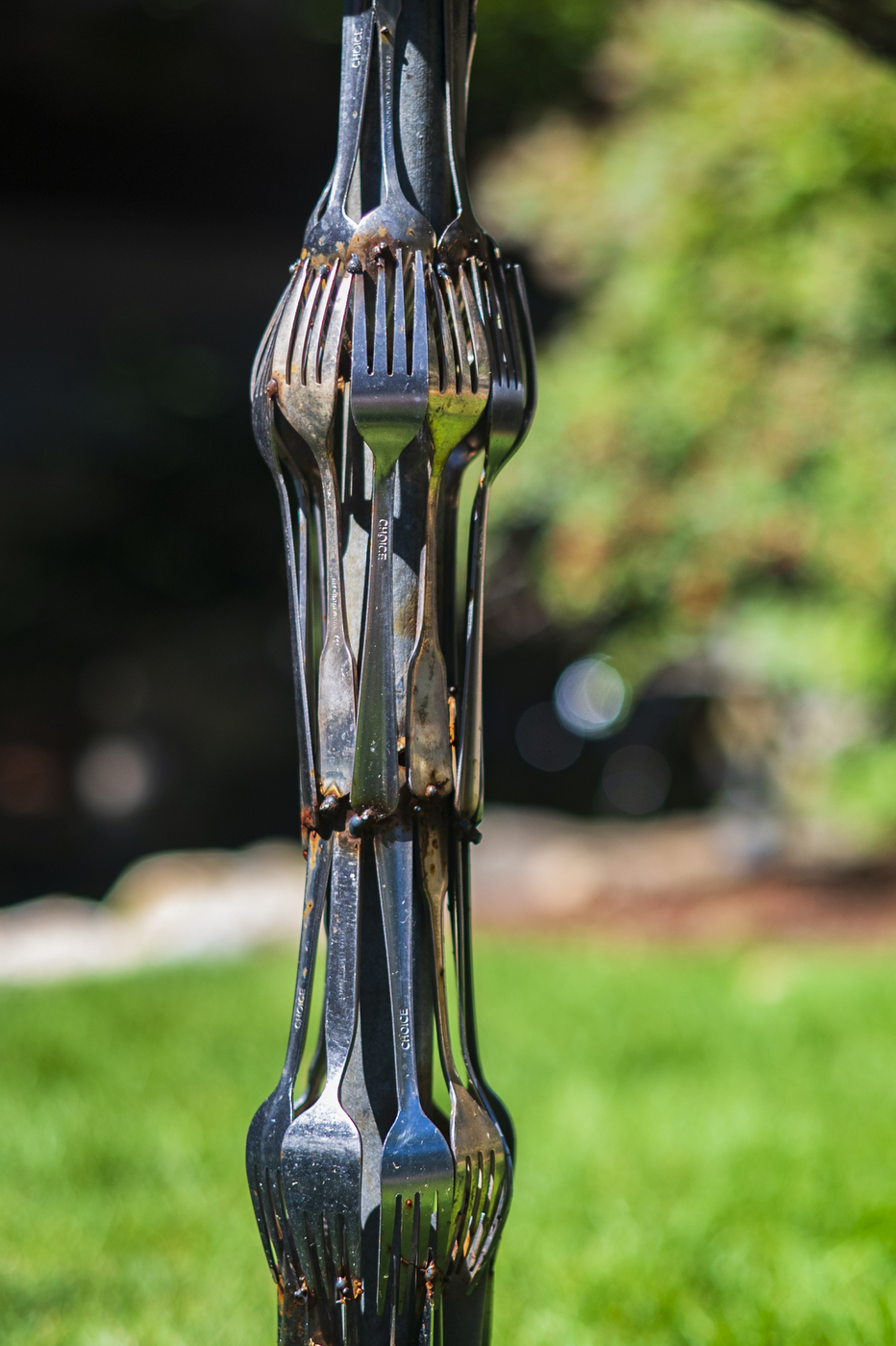
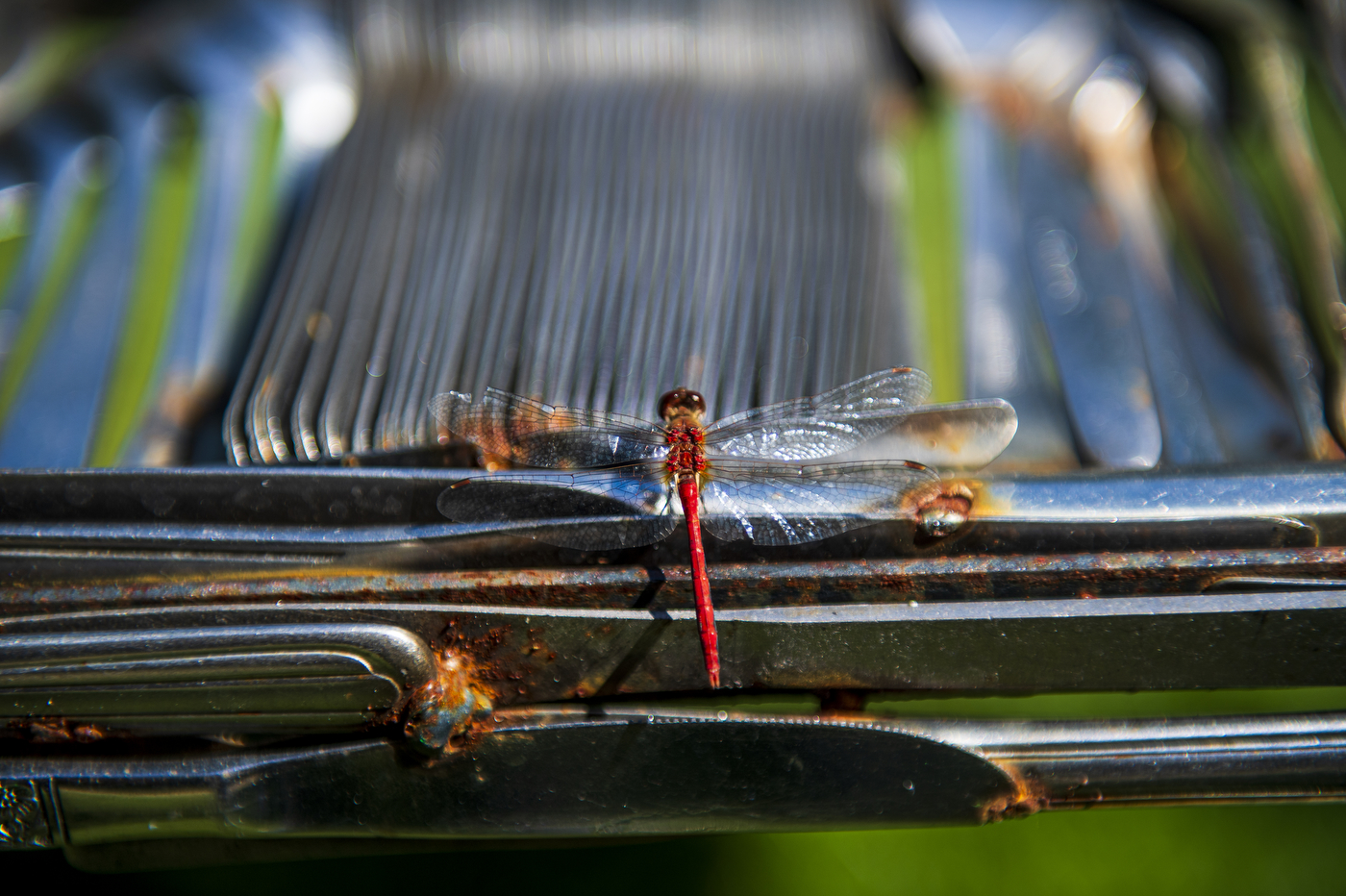
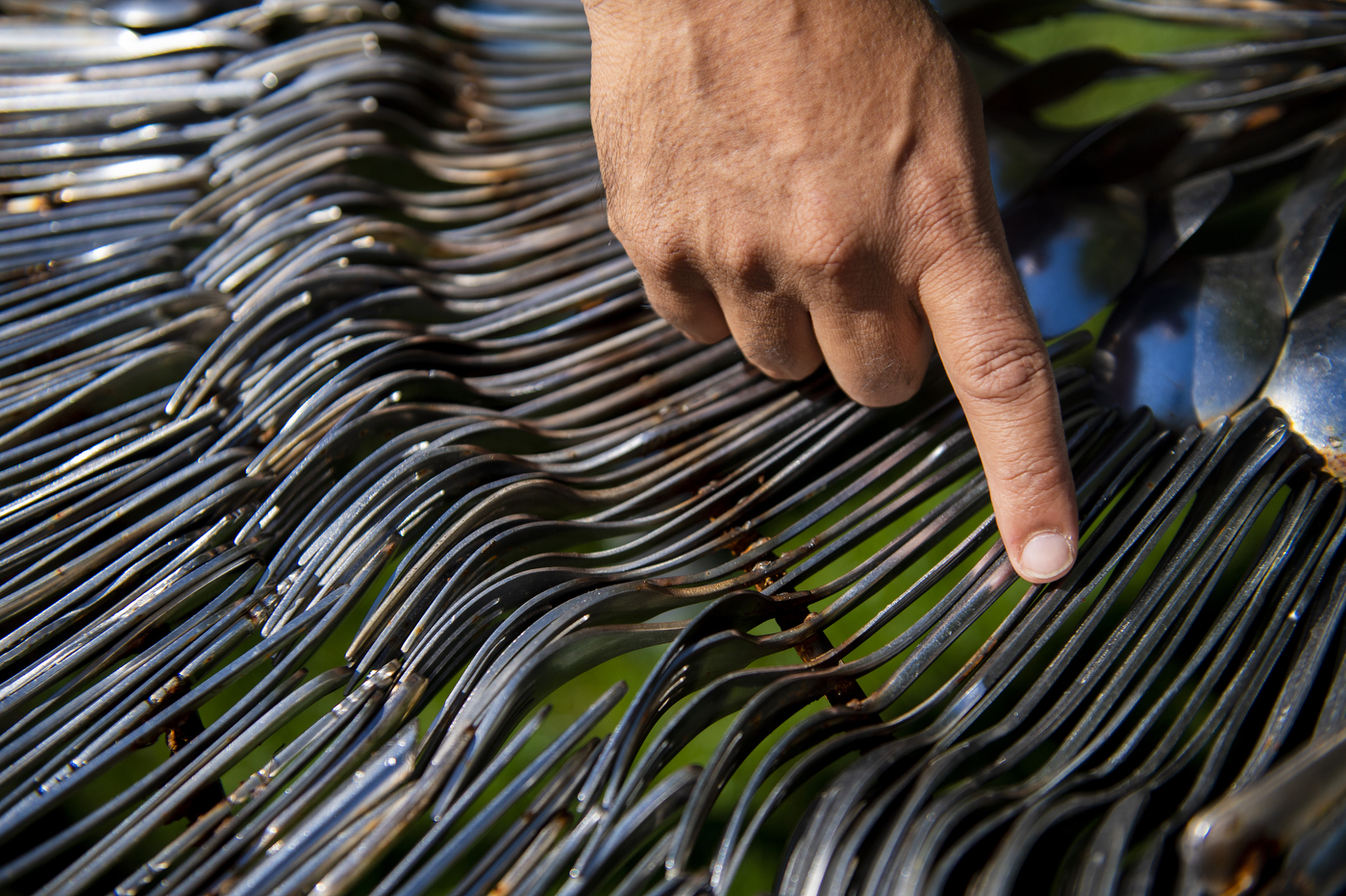
And the numbers are alarming. During the early months of the pandemic, when businesses were forced closed and millions were suddenly out of work, an average of 1,659 new households applied for SNAP benefits every day in Massachusetts, Bhargava says.
To convey the magnitude of the problem, Bhargava and his wife collected 1,659 individual pieces of silverware and set out on designing the sculpture. His wife, a visual artist, welded the cutlery to a metal table frame to produce the sculpture—a striking mosaic that now sits illuminated on a section of lawn by the koi pond.
“The form of a table just felt right,” Bhargava says. “It took a couple months to put it all together.”
Bhargava says the sculpture, whose untidy stacks of welded spoons and forks also present to passersby as, perhaps, bleak and cluttered, is as much a distraction as it is a symbol representing the problem.
“As much as this represents it, it also distracts us from the people” who need help, Bhargava says.
Bhargava and his students are now conducting video interviews of families affected by food insecurity in an effort to spur others to get involved. Those interviews will be available on the website about the sculpture, along with a number of links to organizations and resources dedicated to helping households in need.
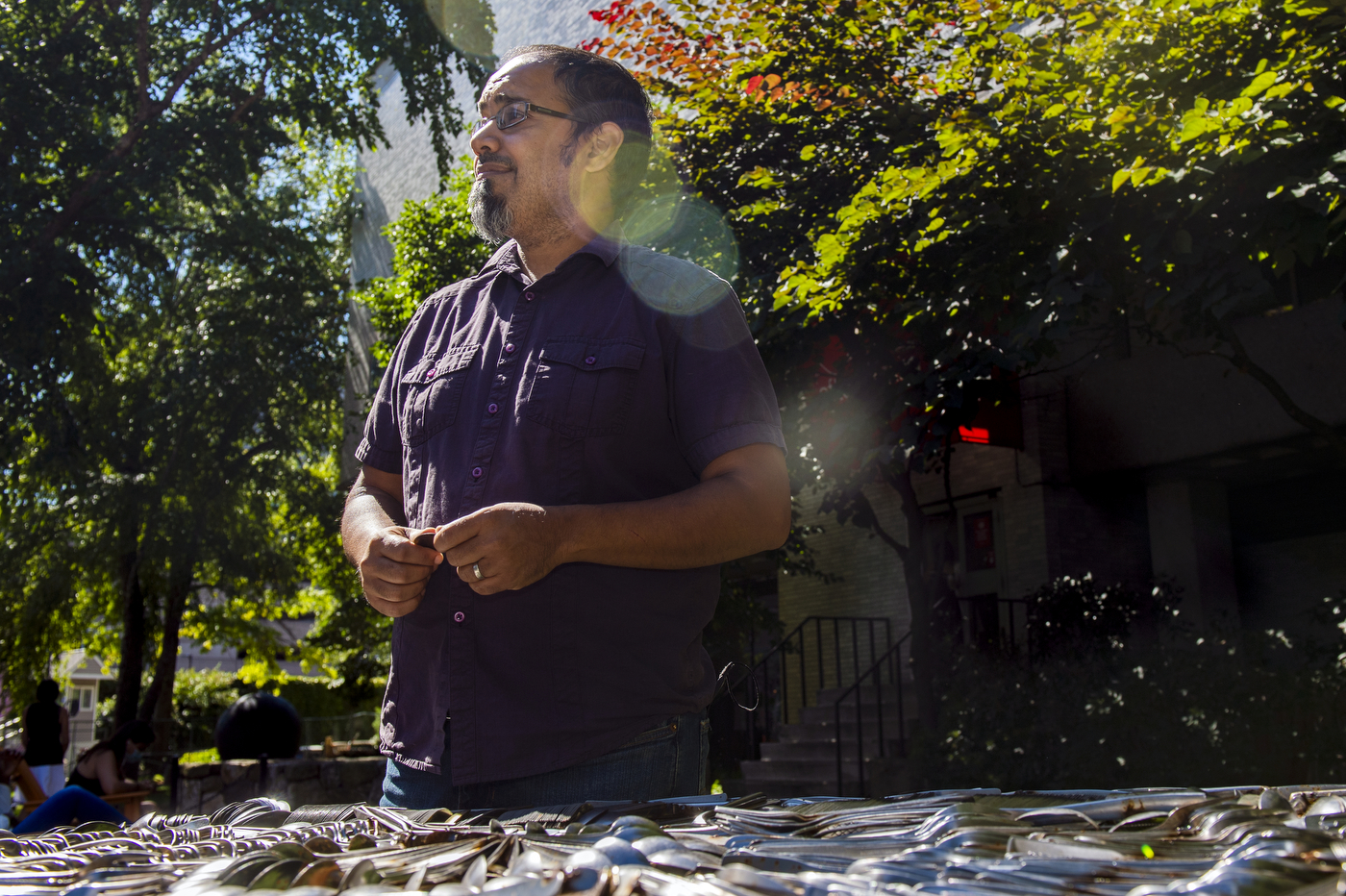
“Even students on campus struggle with food security,” Bhargava says. “Like knowing where to get food, having money to get food, getting the right food, and honestly having the rhythm and schedule to eat it—all of those are real problems on every university campus all around Boston.”
Bhargava says he’s been surprised by the response from curious Northeastern students, faculty, and staff who’ve stumbled upon the sculpture in passing. Some, he says, were eager to learn more.
Others didn’t even know that SNAP benefits existed in Massachusetts. All of it is an illustration of the importance of “data literacy,” Bhargava says.
“More and more civic decisions, by governments and in communities, are being made with data,” Bhargava says. “But we can’t just show people fancy charts. So I work a lot on trying to help people, organizations, and governments find ways to meet in the middle—ways to use data information that are a bit friendlier to people who don’t speak the language of data.”
On Wednesday, Sept. 8, the Bhargavas and the rest of the team who worked on the sculpture will host a community food justice event. The gathering will take place from 3 p.m. to 5 p.m. EDT at the sculpture and will include “educational and creative activities for the community.” There will also be a canned food drive, and attendees are encouraged to donate, if possible.
For media inquiries, please contact media@northeastern.edu.

